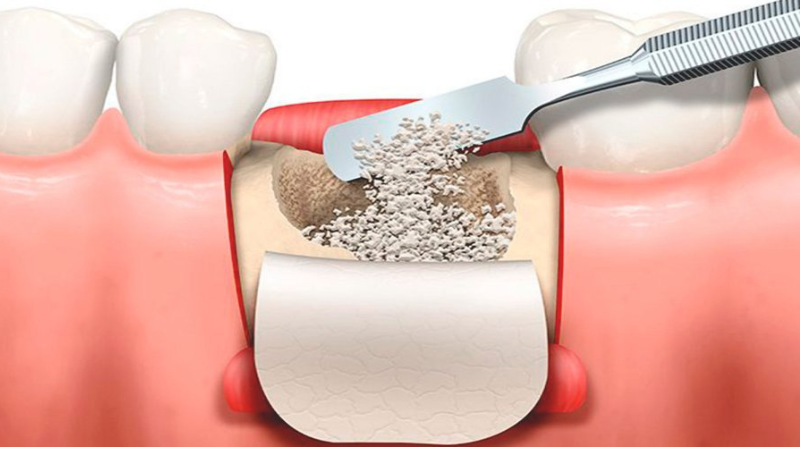Brentwood: (615) 235-1966

How Long Does it Take for Dental Bone Graft to Heal?
Brentwood, TN

When it comes to dental bone grafts, the healing process can be a lengthy and arduous journey. The length of time it takes for a dental bone graft to heal can vary depending on a number of factors, including the patient’s overall health. In some cases, it may take several months for the bone graft to fully integrate with the surrounding bone tissue and for new bone to form. The waiting game can be agonizing as patients anxiously anticipate the final results of their dental procedure. However, with patience & proper care, a successful dental bone graft can lay the foundation for a strong and healthy smile that will last a lifetime. This article will provide all the information you need regarding the concept of dental bone graft healing time.
Dental Bone Graft Healing: Roadmap To a Strong Foundation
Dental bone grafts play a crucial role in restoring lost jawbone and creating a stable foundation for dental implants or other restorative procedures. But after undergoing this procedure, a common question arises: how long does it take for a dental bone graft to heal?
While you might feel back to normal within a week or two, complete healing can take anywhere from 3 to 9 months, sometimes even longer. This timeframe can vary depending on several factors. Let’s delve deeper into the dental bone graft healing journey and what to expect along the way.
Stages of Dental Bone Graft Healing:
The healing process for a dental bone graft can be broken down into four stages:
- Stage 1: Initial Healing (Days 1-7)
- This is the period of adjustment after the surgery. You can expect some swelling, pain, and slight bleeding during the dental bone graft healing time.
- Your dentist will prescribe pain medication to manage discomfort, and applying ice packs can help reduce swelling.
- Stick to a soft diet during this time and be gentle when brushing your teeth.
- Stage 2: Early Healing (Weeks 2-4)
- The swelling and pain should gradually subside during this stage.
- You can resume most of your normal activities, but be cautious when eating and brushing your teeth.
- Gentle rinsing with salt water can help promote healing and prevent infection.
- Follow your dentist’s instructions regarding stitches (if any) and medications.
- Stage 3: Bone Integration (Months 3-6)
- This is a crucial stage where the bone graft material starts to integrate with your natural bone.
- You may still experience some tenderness in the area, but it should improve steadily.
- Your dentist will likely schedule follow-up appointments to monitor progress through X-rays and provide you with an average idea for your dental bone graft healing time.
- Stage 4: Long-Term Healing (6+ Months)
- This is the final stage where the bone graft fully integrates with your jawbone, providing a strong foundation for dental implants.
- It can take several months to a year or even longer for complete integration to occur.
- Your dentist will determine when the bone is ready for further procedures like implant placement.
Factors Affecting Dental Bone Graft Healing Time:
Several factors can influence the duration of dental bone graft healing time. Here are some key ones:
- Type of Bone Graft: There are different types of bone grafts used depending on the situation.
- Autogenous grafts: These use your own bone and typically heal faster as your body readily accepts them.
- Allogenic grafts: These use bone from another human donor and may take slightly longer to integrate.
- Xenografts: These use bone from animals (usually cows) and have the longest healing times.
- Size and Location of the Graft: Larger grafts and grafts placed in the upper jaw (where bone density is naturally lower) generally take longer to heal.
- Your Overall Health: Chronic health conditions like diabetes or a compromised immune system can slow down healing.
- Smoking also negatively impacts healing, so quitting before or after surgery is highly recommended.
- Post-Operative Care: Following your dentist’s instructions regarding diet, oral hygiene, and medications is crucial for optimal healing.
Tips for Optimal Healing After a Dental Bone Graft:
- Maintain a soft diet: This minimizes stress on the graft while it heals.
- Practice gentle oral hygiene: Use a soft-bristled toothbrush and avoid brushing directly on the graft site.
- Take medications as prescribed: Pain medication and antibiotics (if prescribed) help manage discomfort and prevent infection.
- Apply ice packs: Use them for the first few days to reduce swelling and discomfort.
- Get adequate rest: This allows your body to focus on the dental bone graft healing time.
- Avoid strenuous activity: This can delay in healing or increase the risk of complications.
- Attend follow-up appointments: These allow your dentist to monitor progress and address any concerns.
- Quit smoking: Smoking significantly hinders healing, so quitting before or after surgery is highly beneficial.
In the end, dental bone graft healing time is a long gradual process. While the initial recovery period might be uncomfortable, Scheduling a consultation with the dentist and following his instructions will significantly influence the success and timeline of your healing. Remember, open communication with your dentist is key throughout the process. You have to understand the stages of healing, factors impacting it, and implementing the recommended tips, to ensure a smooth recovery and a strong foundation for your future smile.


